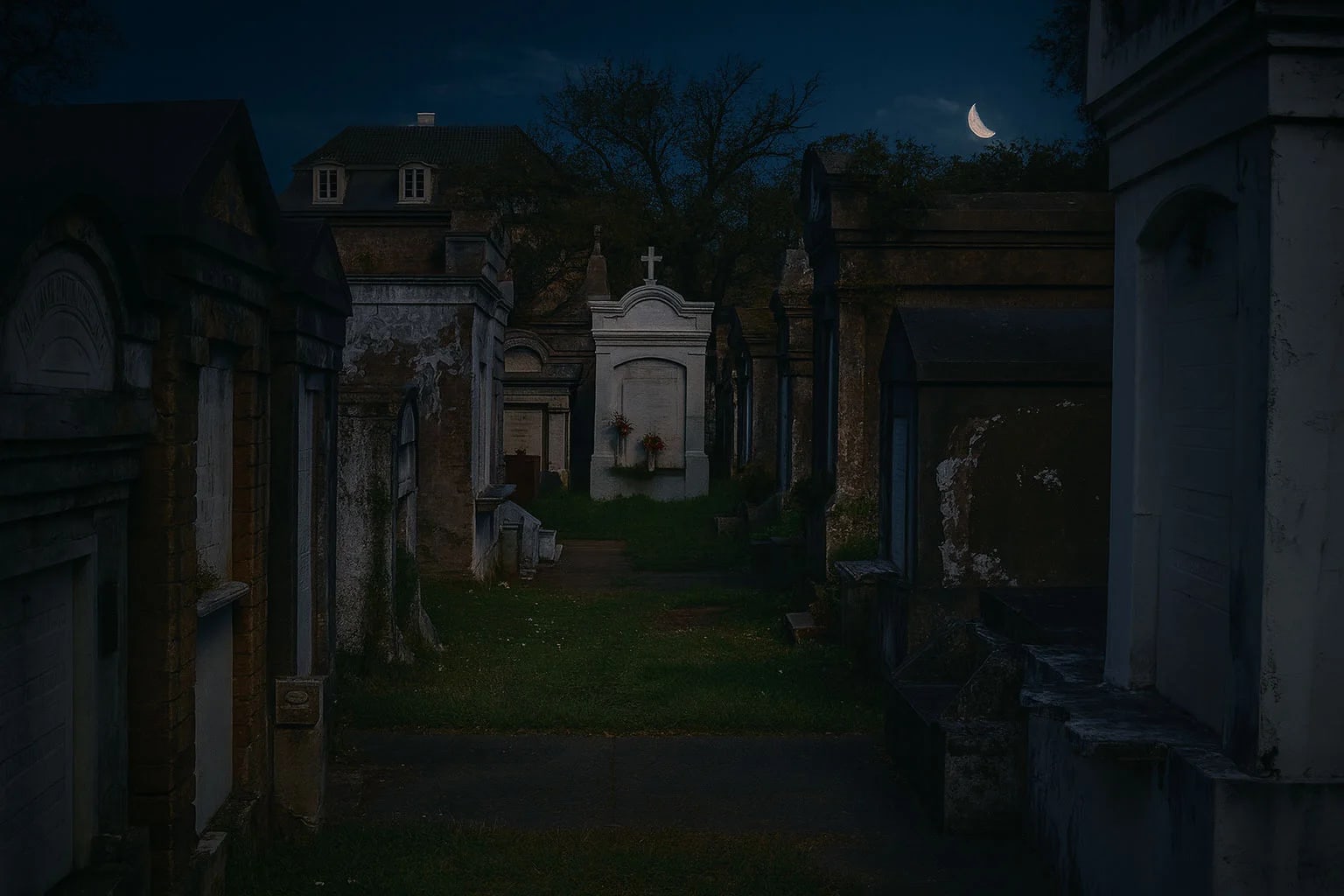For the quintessential New Orleans experience, take the St. Charles streetcar at Canal St. in the French Quarter and head towards the Garden District. Get off at Washington Ave. Walk two blocks (or stop at my favorite coffee shop Still Perkin' for a cafe au lait first), and you'll be standing in front of Lafayette Cemetery nestled in the middle of an absolutely beautiful Garden District neighborhood lined with Live Oak trees. Take a look across the street and you will see the infamous turquoise and white striped awning of Commander's Palace, one of New Orleans best, award-winning, and world renowned restaurants. The pale brick walls of Lafayette #1 lead you to the arched wrought iron gates of the Washington Ave. entrance. Step back in time as you enter the main path, flanked with blooming magnolia trees. Take a look around this haunted cemetery and its labyrinth of historical crypts. Say hello to one of New Orleans' most famed cities of the dead.
The History of Lafayette Cemetery
A non-denominational, non-segregated cemetery, and the oldest of the seven municipal, city-operated cemeteries in New Orleans, Lafayette #1 was named for the City of Lafayette and established in 1833. It was the first cemetery in the city where non-Catholics could be buried, and contains over 26 nationalities.
Lafayette #1 was designed by Benjamin Buisson, city surveyor, and acquired from Cornelius Hurst, holder of the Livaudais Plantation. The plantation was subdivided into city squares in 1832 and sold to the city. Following its annexation by New Orleans in 1852, the city of Lafayette in Jefferson Parish no longer exists and is simply known today as the Garden District. Lafayette was a city of transplants, composed mainly of German and Irish-born citizens and their children. The Garden District and its grand mansions were later established by the New Orleans American elite in the late 1840s who wanted to seperate themselves from the Creoles and the hustle and bustle of the French Quarter.
The formal, four quadrant grounds of Lafayette #1 take up an entire city block and house around 1,100 family tombs and more than 7,000 people. In its hay day, there was an abundance of fragrant and beautiful flowers adorning its narrow alleyways, and with its cross-shaped pattern, gave a park-like atmosphere that was especially enjoyed on All Saints' Day.
Within decades of its opening (thanks to the likes of yellow fever), this beautiful Southern Gothic cemetery was filled to capacity with coping tombs, internment chambers, mausoleums, crypts, and society tombs. It is currently maintained by Save Our Cemeteries Inc., and was placed on the National Register of Historic Places in 1972.

